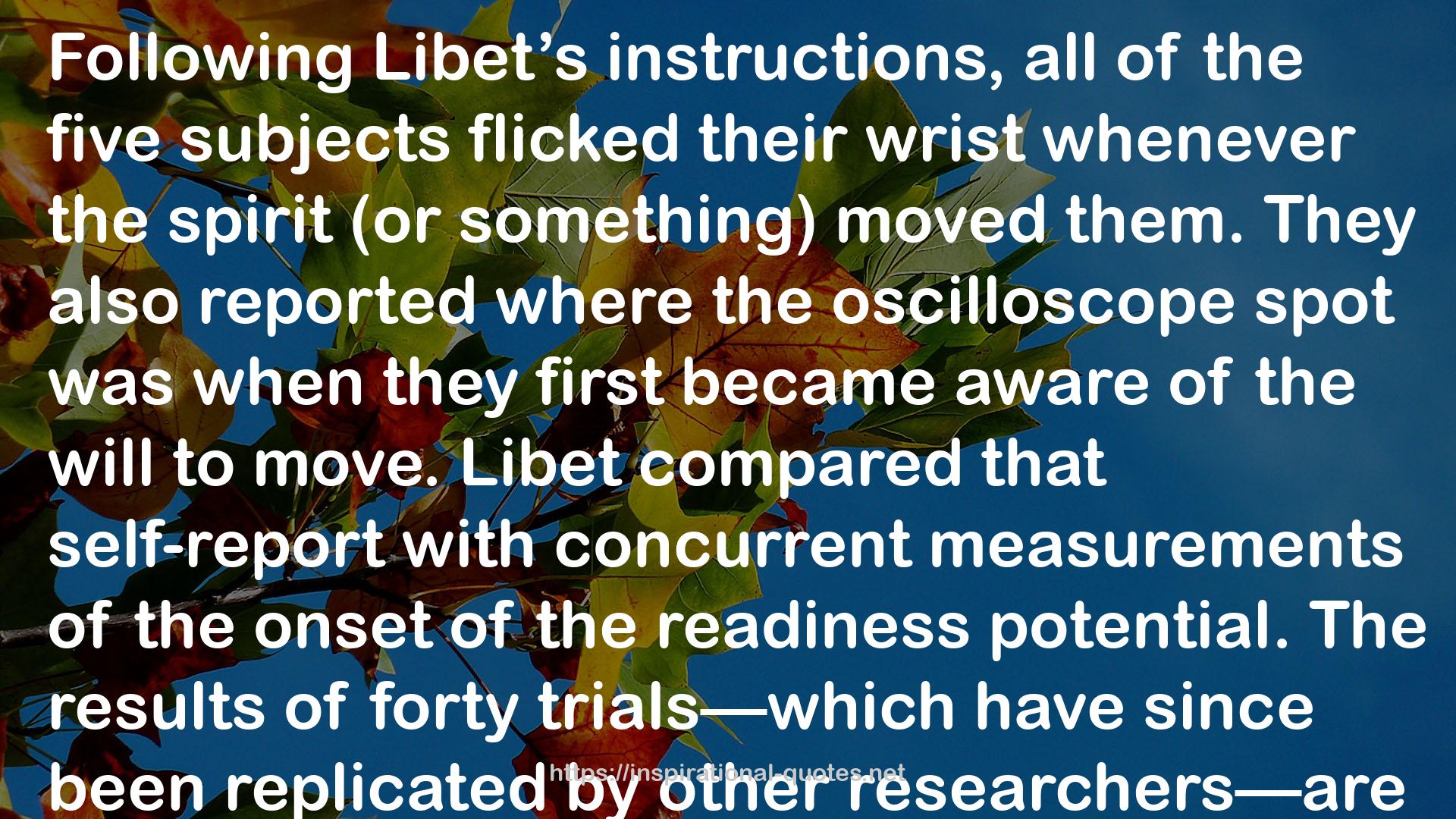" Following Libet’s instructions, all of the five subjects flicked their wrist whenever the spirit (or something) moved them. They also reported where the oscilloscope spot was when they first became aware of the will to move. Libet compared that self-report with concurrent measurements of the onset of the readiness potential. The results of forty trials—which have since been replicated by other researchers—are straightforward to relate, if difficult to interpret. The readiness potential again appeared roughly 550 milliseconds before the muscle moved. Awareness of the decision to act occurred about 100 to 200 milliseconds before the muscle moved. Simple subtraction gives a fascinating result: the slowly building readiness potential appears some 350 milliseconds before the subject becomes consciously aware of his decision to move. This observation, which held for all of the five subjects in each of the six sessions of forty trials, made it seem for all the world as if the initial cerebral activity (the readiness potential) associated with a willed act was unconscious. The readiness potential precedes a voluntary act by some 550 milliseconds. Consciousness of the intention to move appears some 100 to 200 milliseconds before the muscle is activated—and about 350 milliseconds after the onset of the readiness potential. "
― Jeffrey M. Schwartz , The Mind and the Brain: Neuroplasticity and the Power of Mental Force
